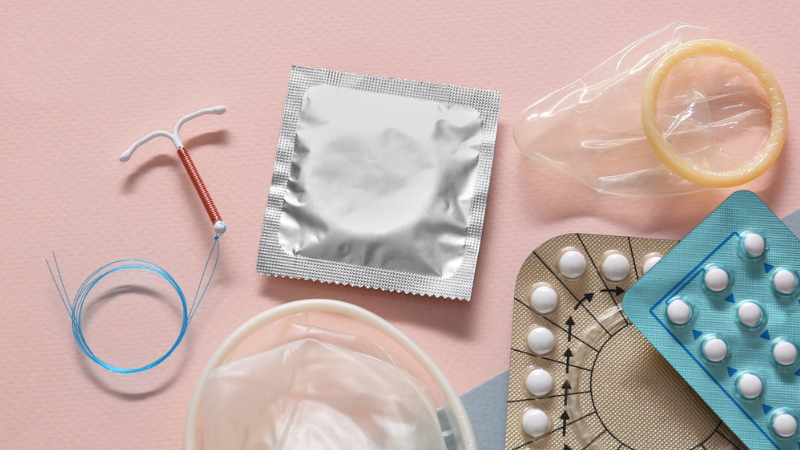
Pregnancy Care / Contraception
Pregnancy care and contraception are essential aspects of reproductive health, encompassing prenatal care, labor and delivery, postpartum care, and methods to prevent or plan pregnancy. Below is an overview of both topics, including key elements, types, and considerations.
Pregnancy Care
Prenatal Care
- Regular Check-Ups: Regular visits to an obstetrician or midwife to monitor the health of the mother and the developing fetus.
- Screening and Tests: Includes blood tests, urine tests, ultrasounds, and screenings for gestational diabetes, anemia, and infectious diseases.
- Nutrition and Supplements: A balanced diet rich in vitamins and minerals, including folic acid, iron, and calcium. Prenatal vitamins are often recommended.
- Lifestyle Modifications: Avoiding harmful substances such as alcohol, tobacco, and certain medications. Regular exercise and stress management are encouraged.
Key Elements of Prenatal Visits
- Medical History and Physical Exam: Initial assessment to identify any risk factors or underlying conditions.
- Ultrasound Scans: To monitor fetal growth and development, typically performed at 8-12 weeks, 18-20 weeks, and possibly more often if needed.
- Blood Pressure Monitoring: To detect and manage preeclampsia.
- Fetal Heart Rate Monitoring: To ensure the fetus is healthy.
- Weight Gain Monitoring: To ensure appropriate weight gain for the health of both mother and baby.
Labor and Delivery
- Birth Plan: A document outlining the mother's preferences for labor and delivery, including pain management, labor positions, and who will be present.
- Types of Delivery: Vaginal delivery, cesarean section (C-section), and assisted delivery (using forceps or vacuum).
- Pain Management: Options include epidural anesthesia, spinal blocks, and non-medical pain relief methods like breathing techniques and water birth.
Postpartum Care
- Physical Recovery: Monitoring and managing postpartum bleeding, healing from any tears or incisions, and managing pain.
- Mental Health: Screening for postpartum depression and anxiety, providing support and counseling as needed.
- Breastfeeding Support: Guidance on breastfeeding techniques, addressing issues like latching difficulties and milk supply.
- Contraception Counseling: Discussing birth control options for spacing or preventing future pregnancies.
Contraception
Types of Contraception
-
Hormonal Methods:
- Birth Control Pills: Daily pills containing estrogen and progestin or progestin only.
- Birth Control Patch: A skin patch worn on the body that releases hormones.
- Vaginal Ring: A flexible ring inserted into the vagina releasing hormones.
- Injectable Contraceptives: Hormone injections given every three months.
- Implants: A small rod inserted under the skin that releases hormones over several years.
-
Barrier Methods:
- Condoms: Male and female condoms that prevent sperm from reaching the egg.
- Diaphragms and Cervical Caps: Barrier devices placed over the cervix.
- Spermicides: Chemicals that kill sperm, used with barrier methods.
-
Intrauterine Devices (IUDs):
- Hormonal IUDs: Release progestin to prevent pregnancy.
- Copper IUDs: Non-hormonal devices that release copper to prevent sperm from fertilizing the egg.
-
Permanent Methods:
- Tubal Ligation: Surgical procedure to cut or seal the fallopian tubes.
- Vasectomy: Surgical procedure to cut or seal the vas deferens in men.
-
Natural Methods:
- Fertility Awareness: Tracking ovulation to avoid intercourse on fertile days.
- Withdrawal: Removing the penis from the vagina before ejaculation.
-
Emergency Contraception:
- Morning-After Pill: Taken after unprotected sex to prevent pregnancy.
- Copper IUD: Can be inserted up to five days after unprotected sex as emergency contraception.
Considerations for Choosing Contraception
- Effectiveness: Varies among methods; hormonal and IUD methods are among the most effective.
- Side Effects: Each method has potential side effects, which should be discussed with a healthcare provider.
- Convenience: Some methods require daily attention (e.g., pills), while others are long-term (e.g., IUDs, implants).
- Reversibility: Some methods are easily reversible (e.g., condoms), while others are permanent (e.g., tubal ligation, vasectomy).
- Health Conditions: Certain health conditions may make some contraceptive methods more suitable than others.
- Personal Preference: Cultural, religious, and personal beliefs play a significant role in choosing a contraceptive method.
Counseling and Education
Patients should have thorough discussions with their healthcare providers about the benefits, risks, and proper use of different contraceptive methods and the importance of prenatal and postpartum care to ensure informed and personalized choices.
